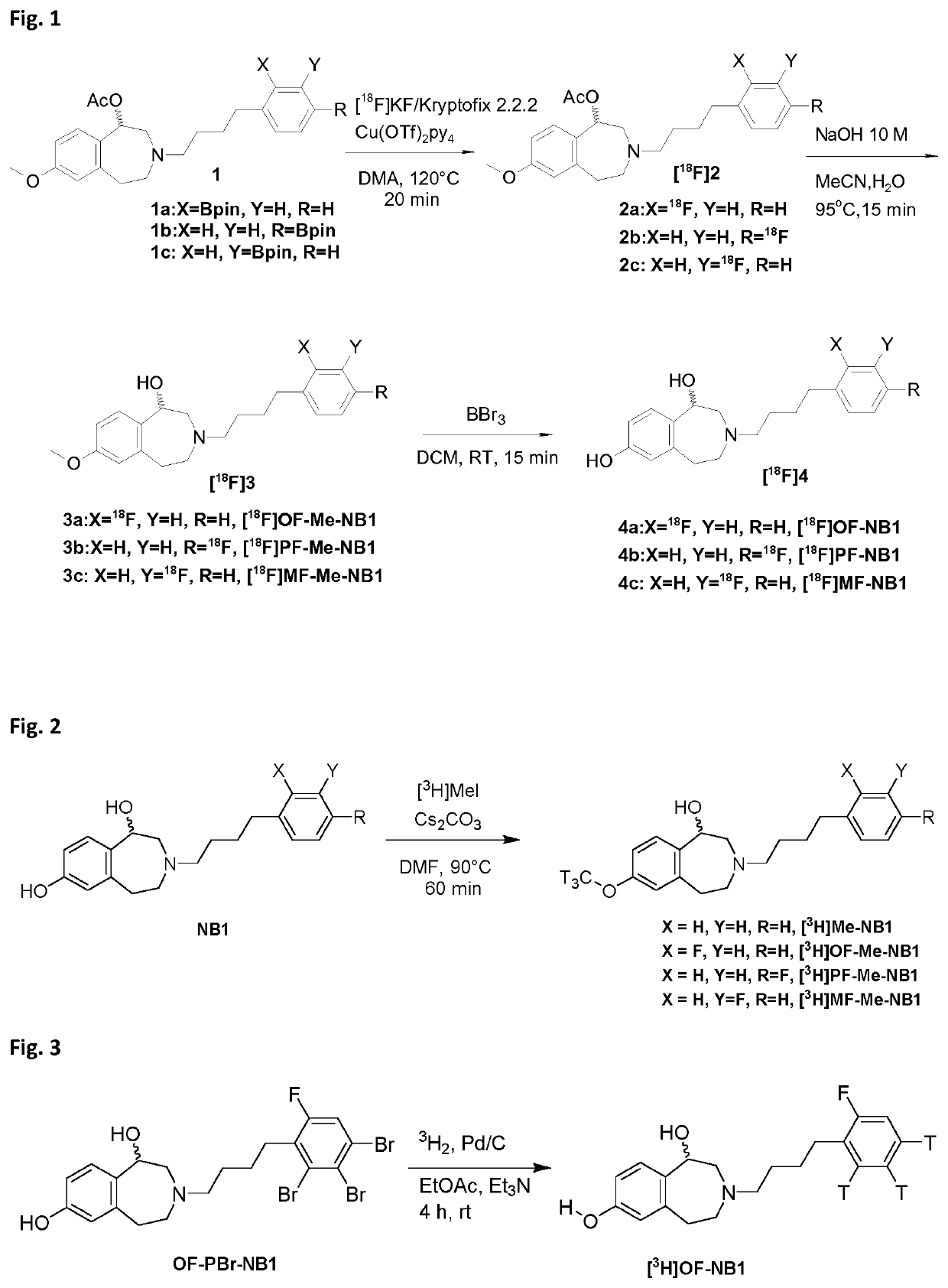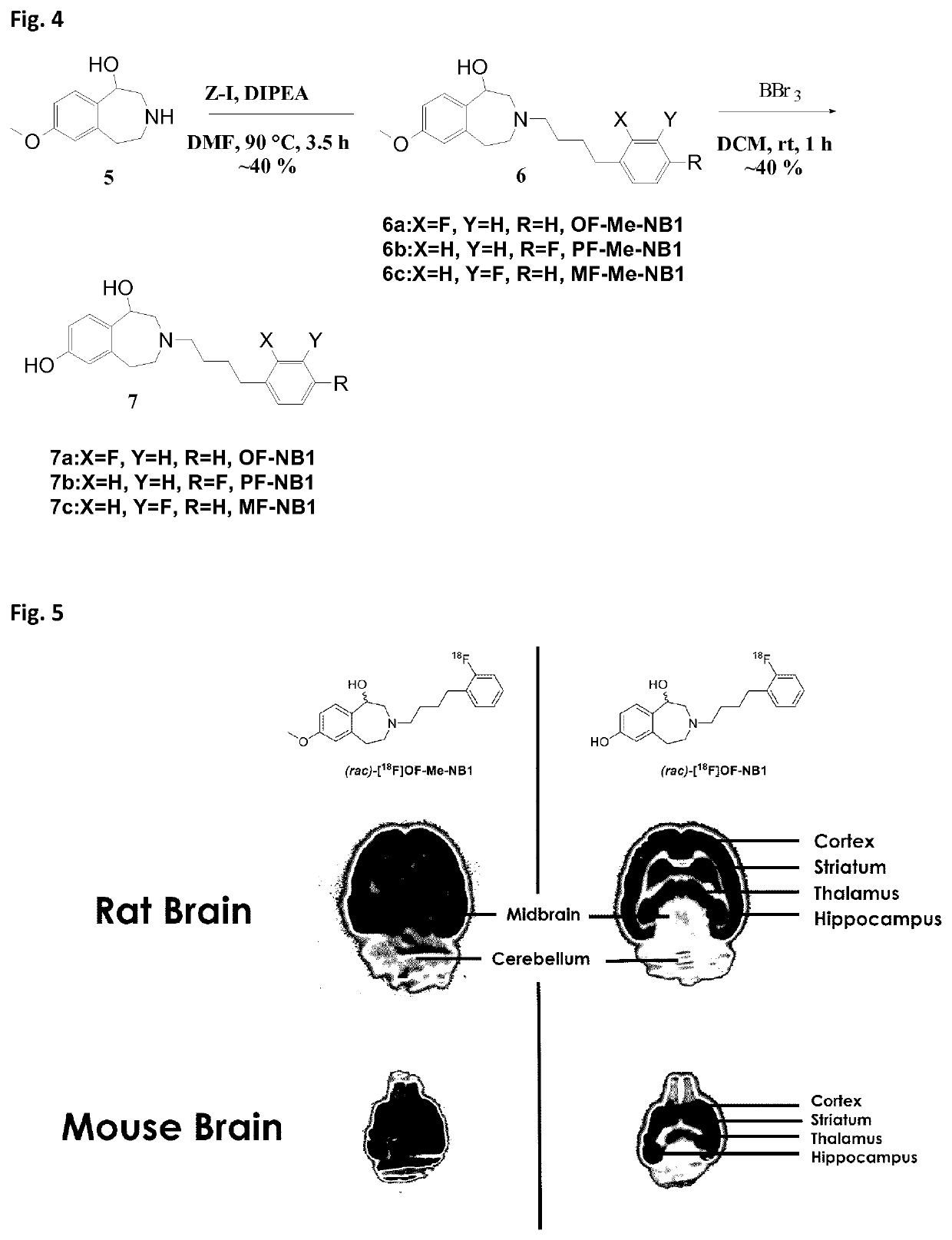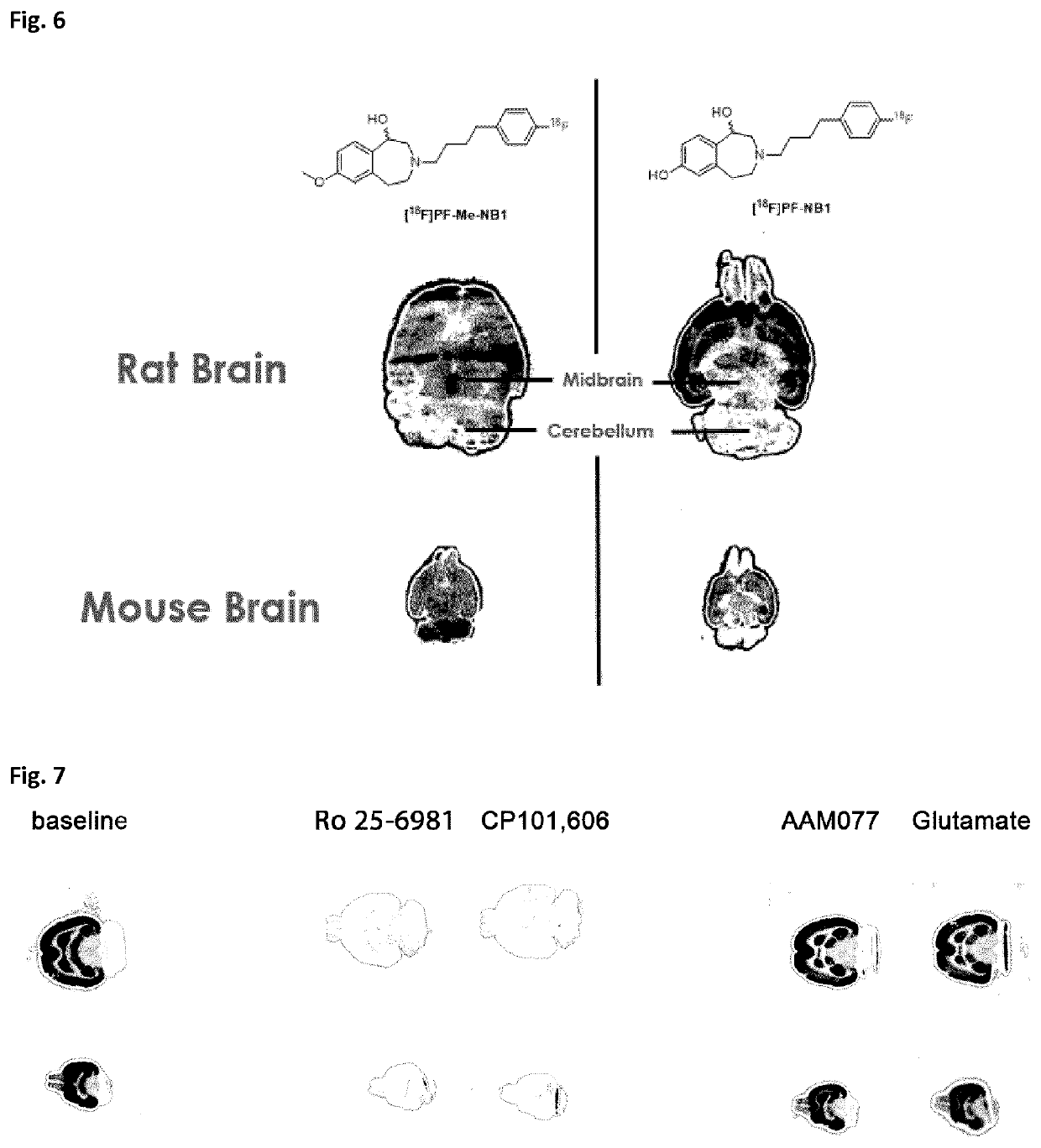Benzazepin-l,7-diol-derived radiolabeled ligands with high in vivo NMDA specificity
- Summary
- Abstract
- Description
- Claims
- Application Information
AI Technical Summary
Benefits of technology
Problems solved by technology
Method used
Image
Examples
example 1
[0118]The general methodology for the synthesis of benzazepin-1-ols is known in the art, e.g. from Tewes et al., ChemMedChem 2010, 5, 687-695. A representative synthetic path as used for producing the labeled compounds for use in the present invention is shown in FIG. 4. The synthetic route of FIG. 4 can be adapted by commonly known methods to deliver derivatives of benzazepin-1-ols and substantially all of the compounds for use in the present invention. The skilled person will routinely adapt the synthetic route to be suitable for the synthesis of any PET ligand of the present invention.
example 2
olabeling
[0119][18F]fluoride was produced and trapped on an anion exchange cartridge (Waters SepPak Accell QMA cartridge carbonate, no pre-conditioning) and then eluted with a solution of Kryptofix 222 (6.3 mg / mL), K2C2O4 (1 mg / mL) and K2CO3 (0.1 mg / mL) in MeCN / H2O (4:1, 0.9 mL) followed by azeotropic drying with MeCN (3×1 mL) (Preshlock et al., ChemComm 2016). The reactivial was purged with air (20 mL) and the residue was re-dissolved in a solution of 6-8 mg boronic ester precursor 2a, 2b, 2c (FIG. 1) and 14 mg Cu(OTf)2(py)4 in 0.3 mL dry dimethylacetamide (DMA). The resulting solution was stirred at 120° C. for 20 minutes and subsequently diluted with 1.5 mL MeCN / H2O (1:1). Upon addition of 0.4 mL aq. NaOH (10 M), the mixture was stirred at 95° C. for 15 min. The product was purified by semi-preparative HPLC (Agilent Eclipse XBD-C18 column, 250×9.4 mm, 5 m, 0.1% H3PO4 in H2O (solvent A), MeCN (solvent B); 0.0-5.0 min, 20% B; 5.1-20.0 min, 20-35% B; 20.1-25.0 min, 35% B, 25.1-30.0 ...
example 3
graphy
[0120]Rodent brain tissue was embedded in Tissue-Tek® (O.C.T.™ Tissue-Tek®, Sakura Finetek Europe B.V., Alphen aan den Rijn, Netherlands). Horizontal rat and mouse brain sections of 10 m thickness were prepared on a cryostat (Cryo-Star HM 560 MV; Microm, Thermo Scientific, Wilmington, Del., USA). The tissue sections were mounted to SuperFrost Plus slides (Menzel, Braunschweig, Germany) and stored at −20° C. until further use. Prior to the autoradiography experiments, brain slices were initially thawed for 15 min on ice and subsequently preconditioned for 10 min at 0° C. in a buffer (pH 7.4) containing 30 mM HEPES, 0.56 mM MgCl2, 110 mM NaCl, 3.3 mM CaCl2, 5 mM KCl and 0.1% fatty acid free bovine serum albumin (BSA). Upon drying, the tissue sections were incubated with 1 mL of the respective radioligand (3 nM) for 15 minutes at 21° C. in a humidified chamber. For σ1R-blockade, 1 μM solution of either SA4503, fluspidine or (+)pentazocine was added to the radiotracer solution. Fo...
PUM
| Property | Measurement | Unit |
|---|---|---|
| Capacitance | aaaaa | aaaaa |
| Capacitance | aaaaa | aaaaa |
Abstract
Description
Claims
Application Information
 Login to View More
Login to View More - R&D
- Intellectual Property
- Life Sciences
- Materials
- Tech Scout
- Unparalleled Data Quality
- Higher Quality Content
- 60% Fewer Hallucinations
Browse by: Latest US Patents, China's latest patents, Technical Efficacy Thesaurus, Application Domain, Technology Topic, Popular Technical Reports.
© 2025 PatSnap. All rights reserved.Legal|Privacy policy|Modern Slavery Act Transparency Statement|Sitemap|About US| Contact US: help@patsnap.com



